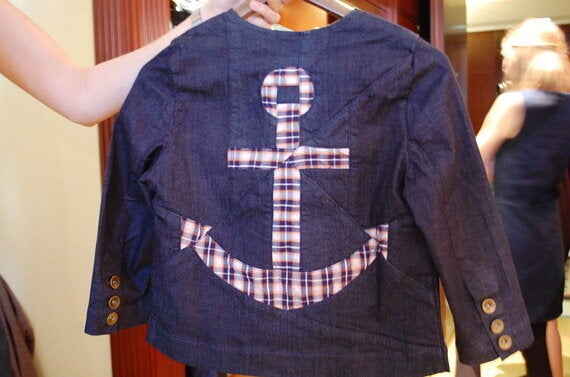After the Rana Plaza disaster last April, consumers could see first hand how their appetite for cheap clothes fuels exploitative working conditions amongst the poorest people on Earth. 2013 became the year that the industry were forced to reevaluate the efficacy of their corporate social responsibility policies. It also marked the year that smaller fashion businesses could create a fair supply chain both in terms of ethics and eco-friendliness.

Photo courtesy of People Tree
British clothing brand People Tree became the first clothing company to get World Fair Trade Organisation (WFTO) Fair Trade label guaranteeing. Safia Minney, founder and CEO said that the label's growth increase this year by 28% due in large part to buyers who are looking for responsible producers.
"Since the Rana Plaza tragedy, consumers want to know what to look for to be sure producers are treated well," says Minney "People Tree is pleased to be amongst the first to launch Fair Trade Certified label for clothing".
I saw the high-end Spring/Summer 14 Atelier Collection at London Fashion Week in September and I was impressed with the label's foray into the luxury market. People Tree collaborates with seasoned designers to create affordable ranges, however Tracy Mulligan's atelier designs are not for a diffuse collection and it is exciting to see this next step in the label's development because it proves that luxury design can be 100% Fair Trade.
The Clean Clothes Campaign and International Labor Rights Forum published Still Waiting, a report that examines the consequences of the Tazreen Fire which preceded the Rana Plaza factory collapse by only a few months. This in depth report is a chilling look at what the mainstream press can only gloss over in a five-minute media packet. The report is in the public domain and anybody who wants to know which retailers have blood on their hands, this is the place to look.

Photo by Christine de Leon
The work of fashion designer and environmentalist Reet Aus was one of my highlights of Berlin Fashion Week last summer. Aus's upcycling fashion project had a successful crowdfund campaign on Kickstarter which gave the designer a the money to produce the garments on a mass scale. The project refashions production waste from Beximo a large t-shirt manufacturer in Bangladesh.

Dress by Xinyan Dai. Photo courtesy of Redress Asia
Redress Asia is in the finals stage of the Ecochic Design Award. A sustainable fashion design competition that sees an emerging designer win a cash prize and the opportunity to design an collection for Esprit using the company's excess denim supply. Denim is one of the worst offenders of environmental degradation because it uses up enormous amounts of water and arable land to grow. The dyeing process pours harmful chemical waste into rivers, contaminating drinking water and killing wildlife. Denim isn't going away any time soon, so if large producers can re-use as much as they can before going back into the production loop, then this is a step toward slowing down the arms race of denim supply.
In all, 2013 was a great year for independent fashion brands to showcase the real possibilities of ethical production and sustainable design. As we move forward into 2014, I feel there is a renewed hope that the fashion industry can clean up its act and serve as an example of how manufacturing - across all sectors - can offer alternatives to exploitative trade and morally reprehensible environmental practices.